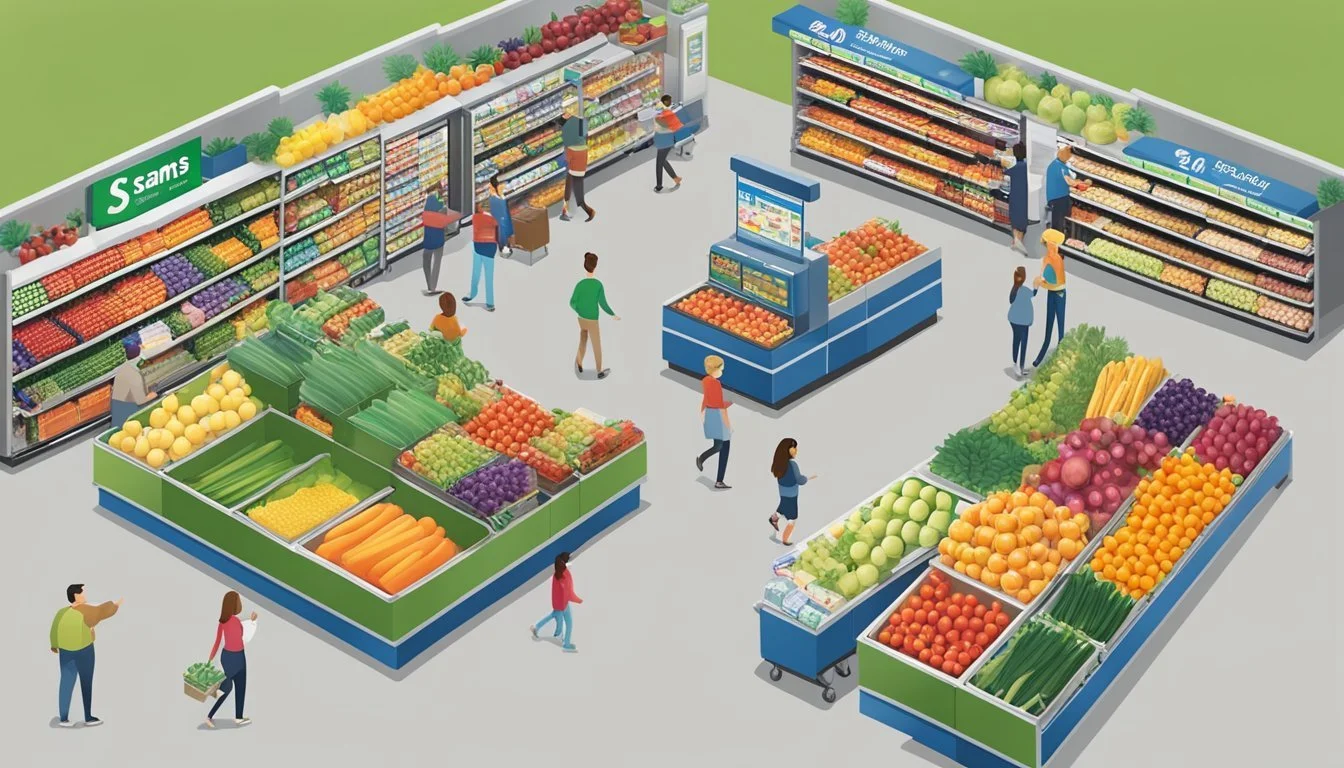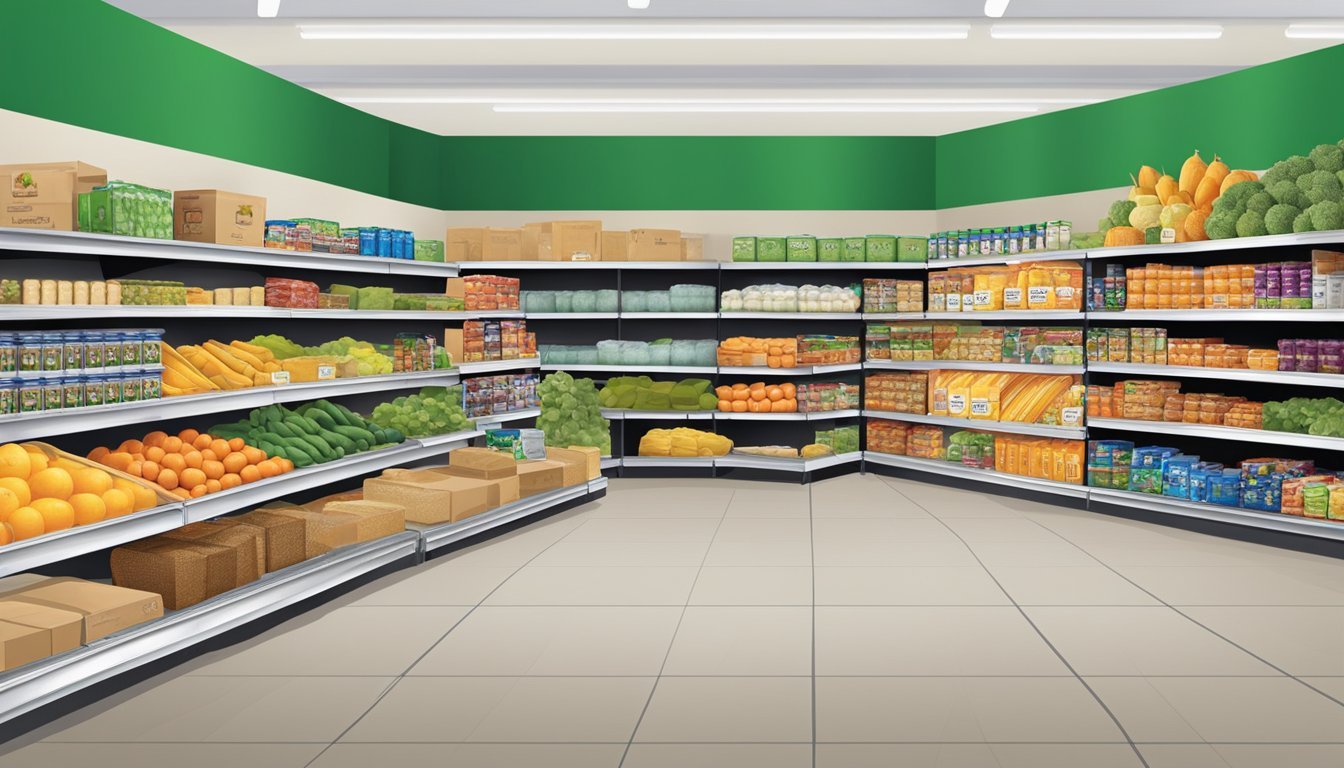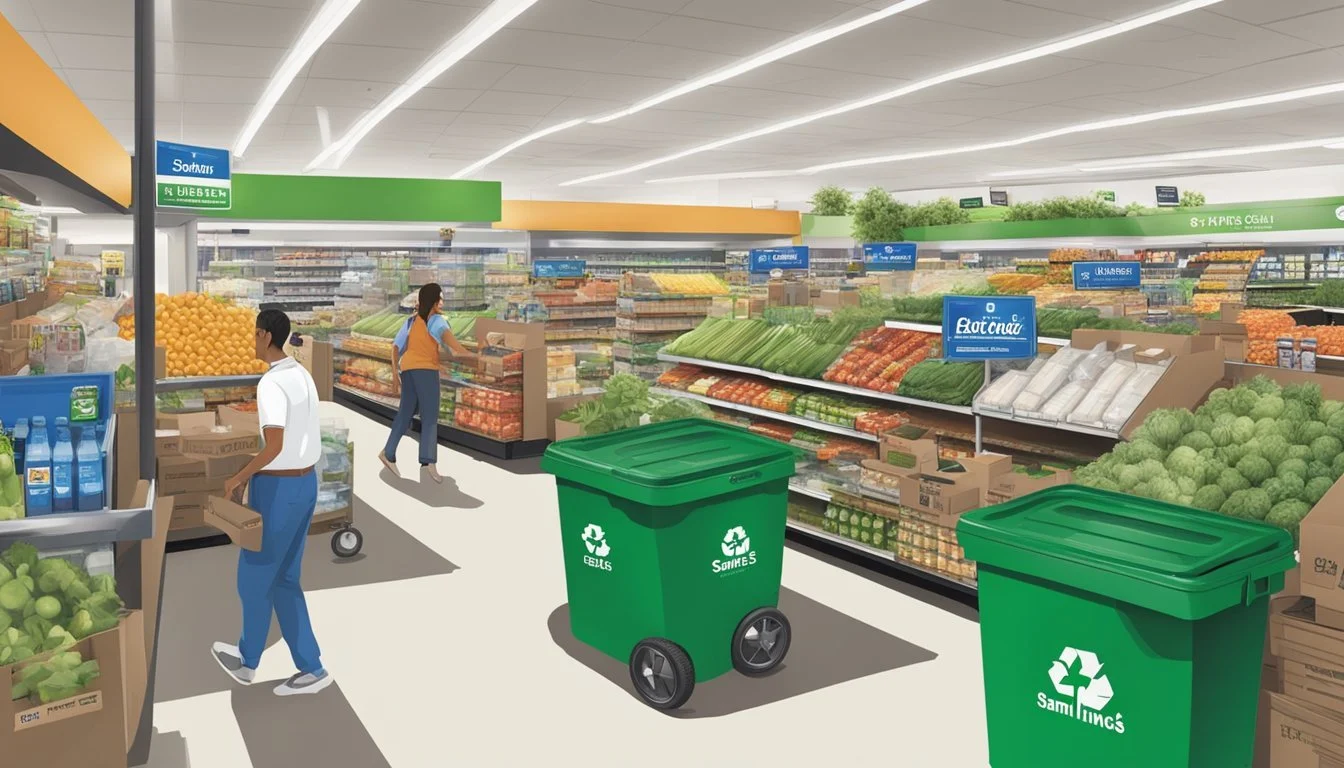Lucky Supermarkets vs Sam's Club
A Comprehensive Comparison of Prices, Selection, and Quality
Grocery shopping can be a significant expense for many households, making the choice of supermarket crucial for budget-conscious consumers. Lucky Supermarkets and Sam's Club are two popular options, each with its own strengths and weaknesses.
While Lucky Supermarkets offers a more traditional grocery store experience with a wider variety of fresh produce and name-brand items, Sam's Club provides bulk purchasing options that can lead to significant savings for larger families or those who prefer to stock up. Sam's Club's membership model allows access to exclusive deals and discounts, potentially offsetting the annual fee for frequent shoppers.
Both stores have their merits, but the best choice depends on individual shopping habits and preferences. Factors such as product selection, pricing, store layout, and customer service all play a role in determining which store offers the better overall value for each shopper.
Overview of Lucky Supermarkets and Sam's Club
Lucky Supermarkets and Sam's Club are two distinct grocery retailers catering to different consumer needs. They differ in their business models, market presence, and target customer base.
Company Histories and Growth
Lucky Supermarkets began as a small chain in California in 1935. It expanded throughout the West Coast over the decades. The company changed ownership several times and faced periods of growth and contraction.
Sam's Club, founded in 1983, is a membership-only retail warehouse club. It's a division of Walmart Inc. Sam's Club has grown steadily since its inception, leveraging Walmart's vast resources and supply chain.
The retailer now boasts nearly 600 locations across the U.S. and Puerto Rico. Sam's Club's growth strategy focuses on competing with other warehouse clubs like Costco.
Market Presence and Location
Lucky Supermarkets primarily operates in Northern California. The chain has a strong regional presence but limited national reach.
Sam's Club has a much broader footprint. It maintains stores in 44 states and Puerto Rico. The company strategically places its warehouses in suburban areas with ample parking.
In some markets, Sam's Club competes directly with other warehouse clubs. It often positions stores near Walmart Supercenters to create retail synergies.
Membership and Consumer Base
Lucky Supermarkets is open to all shoppers. It doesn't require a membership. The chain targets local communities, emphasizing fresh produce and competitive prices.
Sam's Club operates on a membership model. Customers pay annual fees to access the store's bulk items and discounted prices. It offers two membership tiers: Club and Plus.
Sam's Club attracts both individual consumers and small business owners. Its bulk pricing appeals to large families and those looking to save on frequently purchased items.
Consumer Reports ranks Sam's Club favorably among warehouse clubs. The retailer's competitive pricing, particularly on groceries, is a key draw for budget-conscious shoppers.
Product Range and Store Layout
Lucky Supermarkets and Sam's Club offer distinct shopping experiences with different product ranges and store layouts. Both cater to diverse customer needs but take unique approaches to their offerings and store organization.
Variety and Types of Products Offered
Lucky Supermarkets provides a wide selection of everyday groceries, fresh produce, meats, and dairy products. They stock national brands alongside their own store brand items. Lucky also offers a deli counter, bakery section, and prepared foods for convenient meal solutions.
Sam's Club, as a wholesale club, focuses on bulk quantities and larger package sizes. Their inventory includes groceries, electronics, home goods, and even furniture. Sam's Club carries fewer brands per category but offers significant savings on larger quantities.
Both stores sell snacks, beverages, and household essentials. However, Sam's Club typically provides a broader range of non-food items like tires, appliances, and office supplies.
Organic and Store Brand Selection
Lucky Supermarkets maintains a dedicated organic section with fresh produce, dairy, and packaged goods. They offer a mix of national organic brands and their own organic store brand products.
Sam's Club has increased its organic offerings in recent years. Their Member's Mark store brand includes organic options across various categories. However, the organic selection at Sam's Club is generally more limited compared to Lucky Supermarkets.
Both stores prioritize their respective store brands. Lucky's store brand focuses on everyday groceries and household items. Sam's Club's Member's Mark spans a wider range of products, including groceries, home goods, and even some clothing items.
Store Layout and Shopping Experience
Lucky Supermarkets follows a traditional grocery store layout. Produce is typically near the entrance, followed by bakery and deli sections. Aisles are organized by product categories, with refrigerated and frozen foods along the perimeter.
Sam's Club adopts a warehouse-style layout with wide aisles and high shelving. Products are often displayed on pallets or in their original shipping boxes. The store layout is designed for efficiency in moving large quantities of goods.
Lucky Supermarkets offers a more intimate shopping experience with smaller carts and closer product placement. Sam's Club provides flatbed carts for bulk purchases and emphasizes a no-frills, value-focused environment.
Check-out experiences differ significantly. Lucky Supermarkets has multiple check-out lanes, while Sam's Club often has fewer registers but processes larger transactions more quickly.
Quality and Freshness of Products
Lucky Supermarkets and Sam's Club differ in their approaches to product quality and freshness. Both stores aim to provide customers with good value, but their strategies and offerings vary across key product categories.
Freshness of Produce and Perishables
Lucky Supermarkets tends to focus on offering a wide variety of fresh produce, including locally sourced options when available. Their produce sections often feature vibrant displays of fruits and vegetables, with regular rotations to ensure freshness.
Sam's Club, as a warehouse club, provides bulk quantities of produce. While this can be economical, it may lead to challenges in maintaining optimal freshness for some customers.
Lucky typically has a more diverse selection of specialty and organic produce items. Sam's Club, however, excels in offering large quantities of staple fruits and vegetables at competitive prices.
Meat and Seafood Quality
Lucky Supermarkets generally offers a full-service meat counter with trained butchers available to provide custom cuts and advice. Their meat selection often includes a range of qualities, from budget-friendly options to premium cuts.
Sam's Club is known for its bulk meat offerings, including large packs of chicken, beef, and pork. The quality is consistent, and prices are often lower due to the volume purchasing model.
For seafood, Lucky tends to have a broader selection of fresh options. Sam's Club typically focuses on frozen seafood products, which can be convenient for some shoppers but may not appeal to those seeking the freshest catch.
Baked Goods and Prepared Foods
Lucky Supermarkets often feature in-store bakeries producing fresh bread, pastries, and cakes daily. Their selection of baked goods is usually more varied, catering to different tastes and dietary needs.
Sam's Club offers larger quantities of baked goods, often including name-brand items alongside their store brand. Their focus is on popular, mainstream options rather than artisanal or specialty items.
In terms of prepared foods, Lucky typically provides a deli section with made-to-order sandwiches and a hot food bar. Sam's Club offers a more limited selection of prepared foods, but in larger quantities suitable for parties or bulk purchasing.
Pricing and Value for Money
Price comparisons between Lucky Supermarkets and Sam's Club reveal significant differences in cost structures and savings opportunities. Both stores offer unique advantages for budget-conscious shoppers seeking to maximize their grocery dollars.
Comparison of Prices and Discounts
Sam's Club typically offers lower prices on many items compared to Lucky Supermarkets due to its bulk-buying model. A recent study found Sam's Club to be the cheapest among major warehouse clubs, with an average basket cost of $777.42 for 60 items.
Lucky Supermarkets provides more frequent sales and promotions on individual items. They often feature weekly specials and digital coupons for additional savings.
Sam's Club requires a membership fee, starting at $50 annually, which must be factored into overall savings calculations. Lucky Supermarkets has no membership requirement.
Bulk Purchases and Exclusive Brands
Sam's Club specializes in bulk purchases, allowing customers to buy large quantities at discounted prices. This can lead to significant savings on non-perishable goods and household items.
Both stores offer private label brands:
Sam's Club: Member's Mark
Lucky Supermarkets: Store Brand
These exclusive brands are generally priced lower than national brands, offering good value for money. Sam's Club's Member's Mark line covers a wider range of products compared to Lucky's store brand offerings.
Strategies to Save Money on Groceries
At Sam's Club:
Focus on bulk purchases of non-perishables
Look for Instant Savings deals
Use the Scan & Go app for additional discounts
At Lucky Supermarkets:
Sign up for digital coupons
Take advantage of weekly sales
Join their loyalty program for personalized deals
Compare prices by unit cost rather than package price. This helps identify true savings, especially when comparing bulk items to regular-sized products.
Plan meals around sale items and in-season produce to maximize savings at both stores. Consider splitting bulk purchases with family or friends to access Sam's Club savings without waste.
Customer Experience and Services
Lucky Supermarkets and Sam's Club offer distinct shopping experiences tailored to different customer needs. Both stores prioritize convenience and service, but their approaches vary significantly.
Ease of Shopping and Checkout
Lucky Supermarkets provides a traditional grocery store layout, making it easy for customers to find familiar items quickly. Aisles are typically well-organized by product category. Checkout lines move efficiently, with multiple registers open during peak hours.
Sam's Club utilizes a warehouse-style layout. Wide aisles accommodate bulk items and pallet displays. Self-checkout kiosks are available for faster transactions. The Sam's Club app allows members to skip lines with Scan & Go technology.
Both stores offer online ordering and pickup services. Lucky Supermarkets provides home delivery in some areas, while Sam's Club offers curbside pickup at most locations.
Customer Service and Assistance
Lucky Supermarkets emphasizes personalized service. Staff members are often available to assist with product locations or answer questions. Managers are typically present on the sales floor to address customer concerns promptly.
Sam's Club focuses on a self-service model, but employees are available to help with large items or bulk purchases. Membership services desks provide dedicated support for account-related inquiries.
Both stores train their staff in product knowledge and customer service skills. Reviews generally indicate satisfactory experiences at both chains, with some variation between individual store locations.
Additional Services Offered
Lucky Supermarkets often include in-store pharmacies, floral departments, and deli counters. Many locations feature fresh sushi stations and hot food bars. Some stores offer catering services for special events.
Sam's Club provides a broader range of services, including:
Optical centers
Hearing aid centers
Tire and battery centers
Gas stations at select locations
Travel and insurance services
Sam's Club's membership program offers additional perks such as early shopping hours and exclusive savings events. Lucky Supermarkets typically provides a rewards program for regular shoppers, offering personalized discounts and fuel points.
Sustainability and Corporate Responsibility
Lucky Supermarkets and Sam's Club have different approaches to sustainability and corporate responsibility. Both companies aim to reduce their environmental impact and contribute positively to their communities, but their specific initiatives and focus areas vary.
Environmental Practices and Packaging
Lucky Supermarkets emphasizes reducing plastic waste in its stores. They offer reusable bags and encourage customers to bring their own containers for bulk items. The company has also implemented energy-efficient lighting and refrigeration systems.
Sam's Club, as part of Walmart, has more extensive sustainability goals. They aim to achieve zero emissions by 2040 and use 100% renewable energy by 2035. Sam's Club is working on reducing food waste through advanced depackaging technology in over 1,400 stores.
Both retailers are moving towards more sustainable packaging options. Lucky Supermarkets focuses on biodegradable materials, while Sam's Club is exploring innovative solutions to minimize packaging waste across its supply chain.
Animal Welfare and Product Sourcing
Lucky Supermarkets partners with local farmers to source fresh produce and meats. They prioritize offering organic and free-range options to customers who are concerned about animal welfare.
Sam's Club has set ambitious goals for sustainable beef sourcing. They aim to improve animal welfare standards and increase transparency in their supply chain. The company works with suppliers to ensure humane treatment of animals and reduce the use of antibiotics in meat production.
Both retailers offer vegetarian and vegan alternatives to cater to customers seeking more sustainable protein options. They also provide information about product origins to help consumers make informed choices.
Community Involvement
Lucky Supermarkets focuses on local community engagement. They support food banks, sponsor local events, and provide educational programs on nutrition and healthy eating habits.
Sam's Club, leveraging Walmart's resources, has a broader reach in community involvement. They contribute to disaster relief efforts, support education initiatives, and provide grants to local non-profit organizations.
Both companies encourage employee volunteerism and offer programs for staff to engage in community service. Lucky Supermarkets emphasizes supporting small local charities, while Sam's Club often partners with larger national organizations for wider impact.
Sam's Club also utilizes its membership model to involve customers in sustainability efforts, offering eco-friendly product choices and providing information on sustainable living practices.
Brand Perception and Marketing
Lucky Supermarkets and Sam's Club employ distinct approaches to marketing and brand positioning. Consumer perceptions and trust levels differ between the two retailers, influenced by their unique strategies and market presence.
Marketing Strategies and Brand Images
Lucky Supermarkets focuses on local community engagement and personalized shopping experiences. They emphasize fresh produce and ethnic food offerings to cater to diverse customer bases in their operating regions.
Sam's Club leverages its connection to Walmart, promoting bulk purchasing and member-exclusive deals. Their marketing highlights value and savings for families and small businesses. According to a 2022 survey, 19% of U.S. grocery shoppers had encountered Sam's Club advertising in the previous three months.
Both retailers use loyalty programs, but Sam's Club's membership model creates a sense of exclusivity. Lucky Supermarkets relies more on weekly specials and digital coupons to attract price-conscious shoppers.
Consumer Reviews and Trust
Sam's Club ranks higher in national customer satisfaction surveys. It placed 5th in a recent ranking of grocery store brands, ahead of many traditional supermarkets. This suggests strong consumer trust in the Sam's Club brand.
Lucky Supermarkets, being a regional chain, has a more localized reputation. Customer reviews often praise their product selection and community involvement. However, they lack the nationwide brand recognition of Sam's Club.
Trust in Sam's Club is bolstered by its association with Walmart and consistent pricing across locations. Lucky Supermarkets builds trust through long-standing relationships in local markets and responsiveness to community needs.







